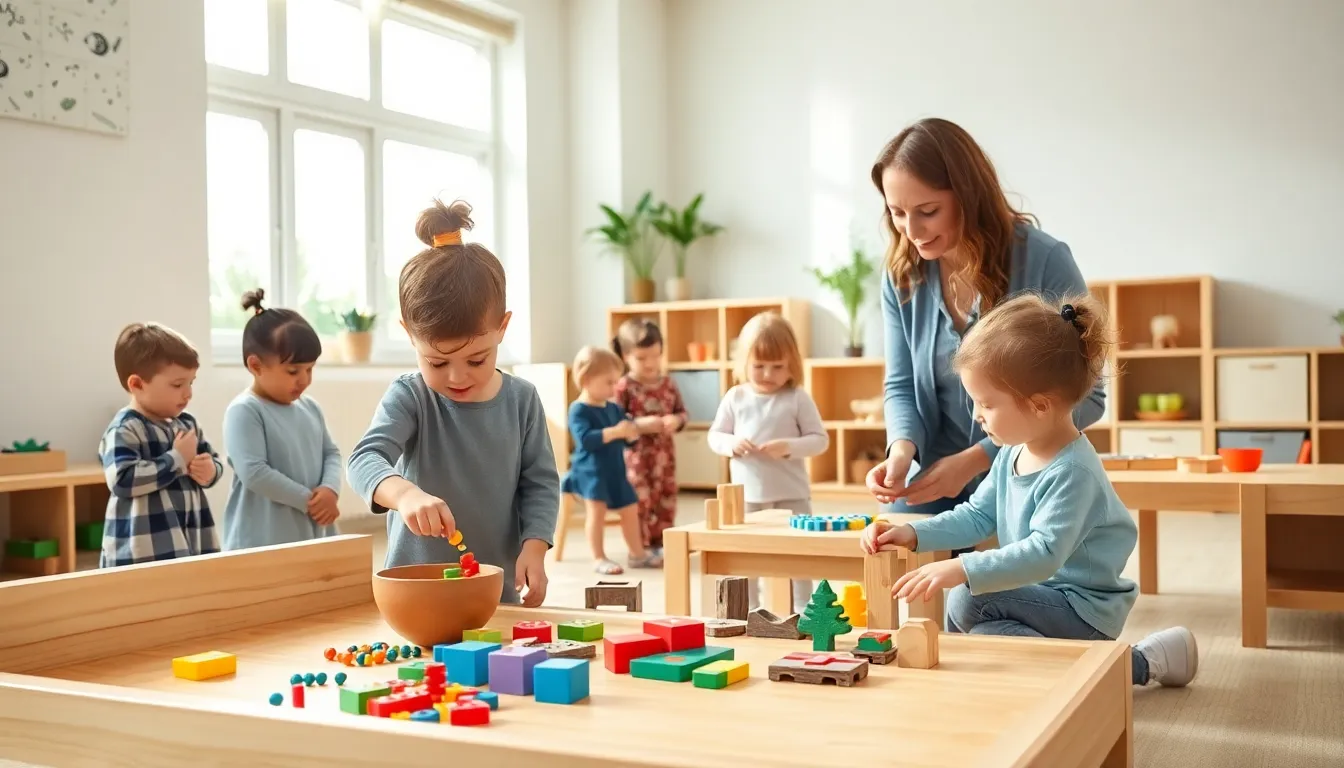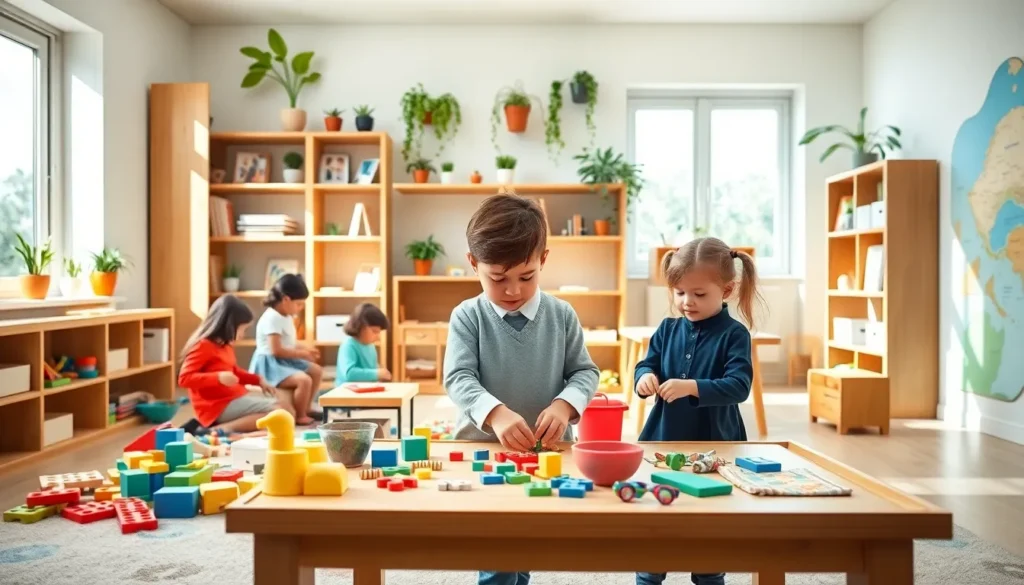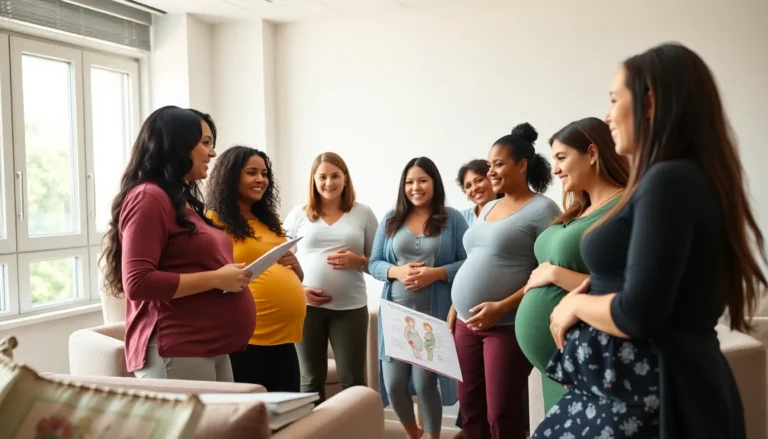Imagine a learning approach so engaging, kids actually want to immerse. Welcome to Montessori education, where curiosity fuels creativity and independence flourishes. Whether it’s transforming your living room into an educational playground or discovering activities tailored to your child’s age, this guide is your passport to a world where learning is as delightful as play. Let’s unwrap the magic of Montessori together and see how it can change the way they learn – and you, too.
Table of Contents
ToggleWhat Is Montessori Education?

Montessori education is more than just a method: it’s a philosophy rooted in respect, independence, and a love for learning. Developed by Dr. Maria Montessori in the early 20th century, this approach emphasizes hands-on, experiential learning. Children are seen as active participants in their own education, exploring subjects at their own pace rather than being confined to a rigid curriculum.
In a Montessori classroom, you won’t find rows of desks or a teacher lecturing from the front. Instead, you’ll see kids engaged in activities that spark their interest. They might explore nature, work on puzzles, or even practice practical life skills like pouring and sorting, each designed to foster independence and confidence. The classrooms are often mixed-aged, encouraging peer learning and collaboration, which is a refreshing departure from traditional settings.
Principles of Montessori Learning
Montessori education hinges on several core principles:
- Child-Centered Learning: The focus is on the child, adapting to their individual learning styles and interests.
- Prepared Environment: Classrooms are thoughtfully designed to allow children to explore freely and engage with materials that challenge them.
- Guided Independence: Teachers serve as guides rather than instructors, presenting lessons and observing children’s choices.
- Hands-On Learning: Children learn best through sensory experiences and play, allowing them to grasp complex concepts through tangible activities.
- Respect for the Child: A tone of mutual respect helps children develop confidence and a sense of responsibility.
These principles create a nurturing environment that encourages lifelong learning and curiosity.
Benefits of Montessori Play-Based Learning
The benefits of Montessori play-based learning are vast and transformative. Here’s a closer look:
Implementing Montessori at Home
Transforming your home into a Montessori-inspired space can be simple yet impactful. Start by creating a designated learning area where materials are accessible and organized. Choose toys that promote independence, such as puzzles, blocks, and art supplies. Encourage exploration: let your children choose activities that captivate them. This not only nurtures decision-making skills but empowers them to take charge of their learning.
Creating a Montessori Environment
To set the stage for success, declutter and simplify your spaces. Keep materials within reach and rotate toys regularly to maintain interest. Use natural materials whenever possible. Consider adding a small table and chair for focused activities, and ensure it’s a comfortable space where they can spend time engaging with their work. This autonomy fosters creativity and inspires deeper exploration.
Montessori Activities for Different Ages
Montessori activities vary by age, catering to the developmental needs of children. Here are some age-specific ideas:
- Infants (0-1 year): Provide sensory experiences such as fabric swatches, rattles, and mirrors to engage their senses.
- Toddlers (1-3 years): Activities like pouring, transferring, and simple art projects encourage fine motor skills and independence.
- Preschoolers (3-6 years): At this stage, children thrive with opportunities to explore science through nature walks, counting games with shells, or practicing keyboarding skills.
- Early Elementary (6-9 years): Practical life skills become essential, encourage activities like basic cooking or gardening to develop responsibility and care for their environment.
- Older Students (9-12 years): Introduce collaborative projects that require critical thinking. Let them explore community resources to understand real-world applications of their studies.
Finding Montessori Resources
Locating high-quality Montessori resources can feel like an adventure. Many online platforms offer ready-made materials and lesson plans. Websites like Montessori ‘n’ Such and the Montessori Foundation provide an array of materials suited for various age groups.
Local community libraries can also be gold mines of information. Look for parenting groups that focus on Montessori methods for recommendations. Many educators and parents swap ideas and resources to enhance their practices. Don’t forget the power of social media. Platforms like Pinterest and Instagram are bubbling over with inspiring Montessori setups and activity ideas.




